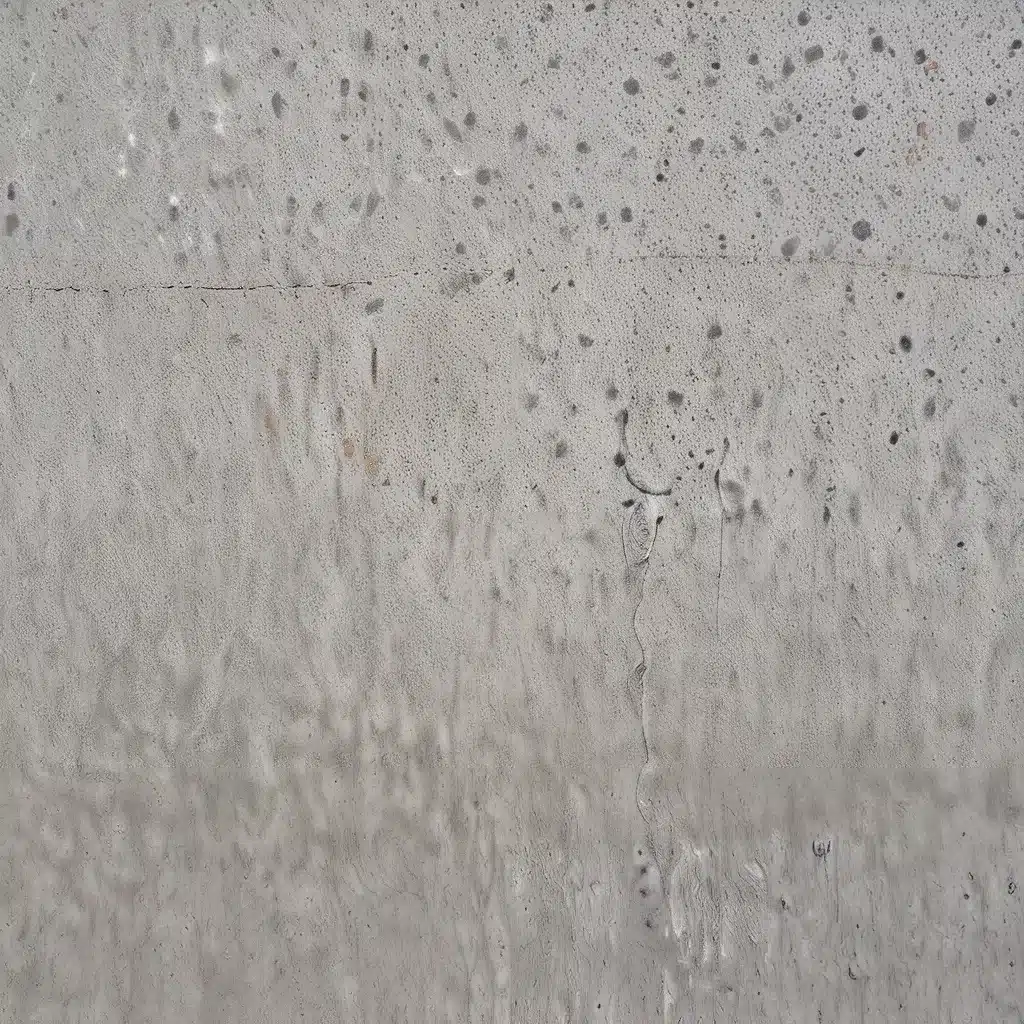
Sweating Concrete: The Beaded Bane of Every Homeowner
Have you ever walked into your garage or basement, only to be greeted by a glistening array of water droplets adorning your concrete walls? If so, then you’ve experienced the frustrating phenomenon known as “concrete sweating.” It’s a common issue that can leave homeowners scratching their heads, wondering what’s causing this watery display and how to make it stop.
Well, my friends, today’s the day we dive deep into the world of concrete condensation and uncover the secrets behind this damp dilemma. Together, we’ll explore the various culprits responsible for this sweaty situation, and I’ll share some tried-and-true solutions to help you bid farewell to those pesky beads of moisture once and for all.
Unraveling the Mysteries of Concrete Sweating
Concrete sweating, or condensation on concrete surfaces, is a surprisingly common occurrence, and it can happen for a variety of reasons. At its core, it’s a result of the natural process of water vapor interacting with cooler surfaces. But the specifics can vary depending on your home’s unique setup.
One of the primary causes is, believe it or not, high humidity levels. When the air surrounding your concrete walls or floors is saturated with moisture, that water vapor can condense on the cooler surface, creating the dreaded sweating effect. This is especially common in basements, garages, or other areas with limited ventilation.
But humidity isn’t the only culprit. Cracks or gaps in the concrete itself can also allow moisture to seep in from the outside, leading to that telltale beaded appearance. And let’s not forget about that pesky capillary action – the way water can be pulled up through porous materials like concrete, causing a damp, sweaty look.
Combating Condensation: Strategies for a Dry Concrete Surface
Now that we’ve uncovered the various reasons why concrete can develop that unwanted wetness, let’s dive into some practical solutions to address this issue.
Improve Ventilation and Dehumidification
One of the most effective ways to tackle concrete sweating is to address the root cause – high humidity. By improving the ventilation in the affected area and using a dehumidifier to remove excess moisture from the air, you can create an environment that’s less conducive to condensation formation.
Seal Those Cracks and Gaps
If cracks or gaps in the concrete are allowing moisture to seep in, it’s time to break out the caulk gun and get to work. Using a high-quality silicone sealant, carefully fill in any crevices or openings to prevent water intrusion. This step can be a game-changer in stopping the sweating.
Waterproofing: The Concrete Sweating Superhero
For a more comprehensive solution, consider applying a concrete waterproofing treatment to the affected surfaces. These specialized sealants and coatings can create an impenetrable barrier, stopping moisture in its tracks and keeping your concrete dry and sweat-free.
Insulation: The Cool Concrete Cure
Another effective strategy is to insulate the concrete walls or floors. By adding insulation, you can prevent the surface from getting as cold, which in turn reduces the likelihood of condensation forming. This is particularly helpful in spaces like basements or garages where temperature fluctuations can contribute to the sweating problem.
Divert that Drainage
Remember that old saying, “an ounce of prevention is worth a pound of cure”? Well, it certainly applies to concrete sweating. By ensuring proper drainage around your home, you can prevent groundwater from seeping into the concrete and causing those pesky moisture issues in the first place.
So, there you have it – a comprehensive guide to conquering the sweaty concrete conundrum. By employing a multifaceted approach that addresses the various causes, you can bid farewell to those beaded walls and floors, and enjoy a dry, comfortable living space.
Putting it All Together: A Concrete Sweating Solution Roadmap
Still feeling a bit overwhelmed by all the options? No worries – let’s break down the steps to tackling concrete sweating in a clear, easy-to-follow roadmap:
- Identify the Cause: Determine whether the sweating is due to high humidity, cracks/gaps, capillary action, or a combination of factors.
- Improve Ventilation: Install fans, vents, or a dehumidifier to reduce moisture levels in the air.
- Seal the Cracks: Use a high-quality silicone sealant to fill in any cracks or gaps in the concrete.
- Apply Waterproofing: Invest in a professional-grade concrete waterproofing treatment to create an impenetrable barrier.
- Insulate the Surfaces: Add insulation to the concrete walls or floors to prevent temperature fluctuations and condensation formation.
- Manage the Drainage: Ensure proper grading and install gutters/downspouts to divert water away from the foundation.
Remember, tackling concrete sweating may require a multi-pronged approach, but with the right strategies in place, you can say goodbye to those pesky water droplets and hello to a dry, comfortable living space.
So, what are you waiting for? Grab your toolbox and get ready to conquer the concrete sweating challenge – your home will thank you for it!

